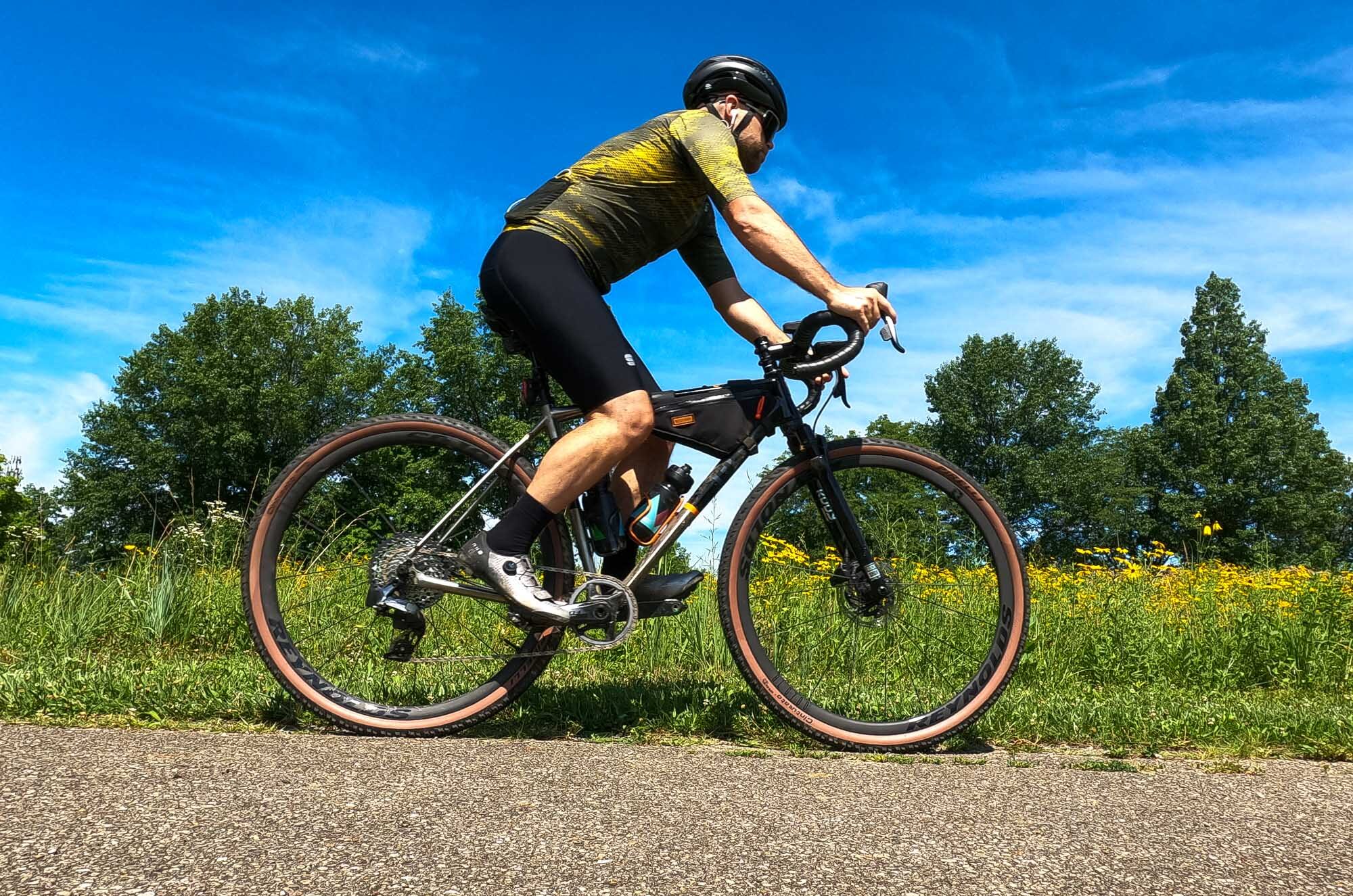Do you really need a suspension fork on a gravel bike? The obvious answer is, no, you don’t really need it. Even with a rigid fork, modern gravel bikes are fantastically versatile. Yet, like so many things that you don’t really need, a gravel suspension fork can unlock the potential for new terrain or increased rider comfort.
To test that theory, I jumped at the chance to test out the new X3-S from T-Lab in Montreal. More than just a suspension fork-specific gravel frame, T-Lab specializes in building unique titanium bikes. Take the inherent ride comfort the aerospace material is known for and add in custom-shaped titanium tubing, and you have what T-Lab views as the “future of Ti.”
No matter what frame builder you’re talking to, they all seem to agree that titanium for all its magic, can be very tricky to work with. Over the years, T-Lab has perfected their proprietary process for shaping seamless titanium into the aggressively shaped tubing used to make their bikes. T-Lab refers to the process as their Ti-Morph technology, but more importantly, it’s this shaping of the tubeset that results in a claimed 30% increase in stiffness over titanium frames from other builders.
Stiffer Titanium
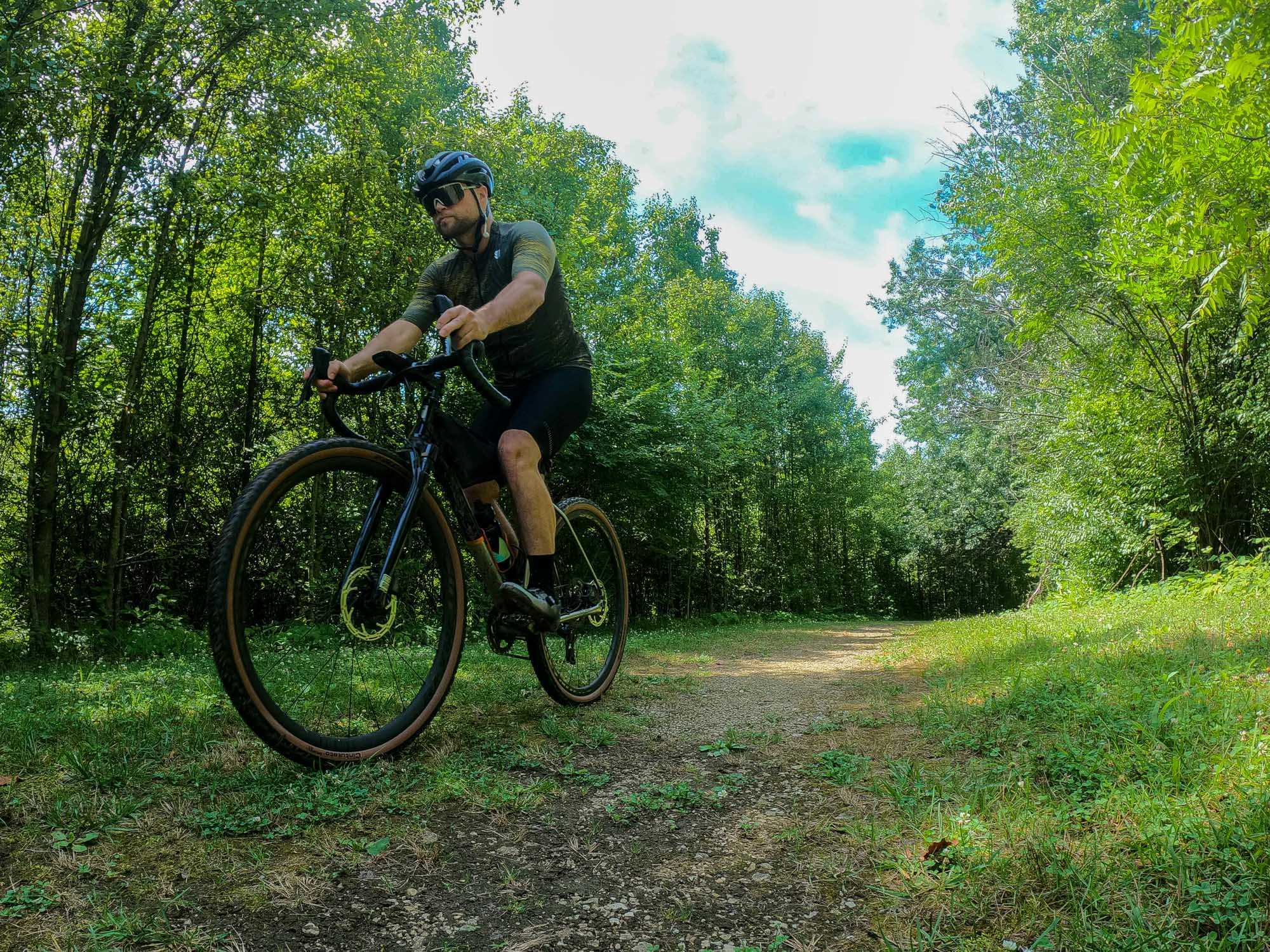
While titanium is known for a magic-carpet-like ride feel, some titanium frames throughout history have had a reputation for being a bit noodly. Not here. The stiffness claims are instantly apparent when you first push the pedals. Even for a bike fitted with 45-50mm wide tires, the X3-S surges forward with each pedal stroke.
For me, this sensation was most noticeable on long road climbs. On one particular ride, I wasn’t feeling that great and as a result, didn’t feel like I was trying all that hard on the climb. The surprise came later while uploading my ride and realizing that I had set my personal best time on that climb that day – a climb that I have frequented with lightweight, purpose-built climbing road bikes.
That trend continued with subsequent rides. Keeping in mind that this is a titanium gravel bike with 700c x 45 to 50mm tires, a suspension fork, a dropper post, a mini frame bag, and two bottles, It seems to be faster on the road than it has any right to be.
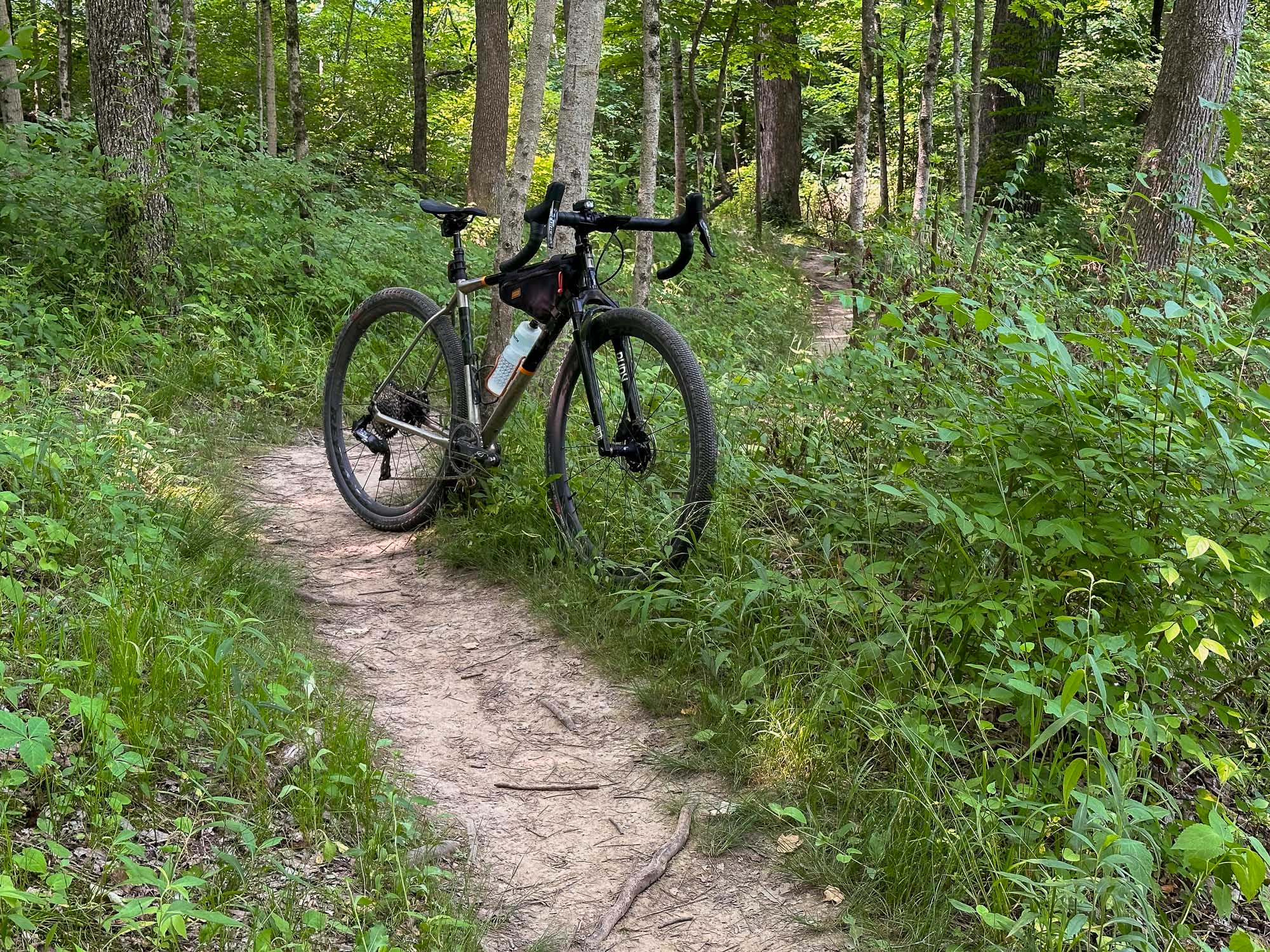
That stiffness carries off-road as well, in the best way possible. As soon as you put a suspension fork with wide tires on a gravel bike, you open yourself up to far more aggressive riding, especially when it comes to light singletrack.
One of my favorite ways to use a gravel bike is to ride from my house to some of the easier mountain bike trails in town, session the trails, and ride back. Depending on the trail, when you’re riding a gravel bike like the X3-S, you can almost build up more speed than you would on a mountain bike. Before you know it, you’re deep into a corner needing to change direction in a hurry – one of the areas the X3-S really shines.
The added lateral stiffness sets the frame apart from other titanium bikes, and even some other carbon bikes, with razor-sharp handling on tricky rock or root-filled zones. The bike never feels like it’s pushing through corners, and allows you to easily set up for technical moves or quick bursts of power. The torsional frame stiffness also makes the X3-S a great candidate for bikepacking duties – loading a ti frame up with a bunch of heavy gear can make for an interesting ride if the tubes aren’t up to the task.
Dropper Post or Seatpost Compliance, Pick One
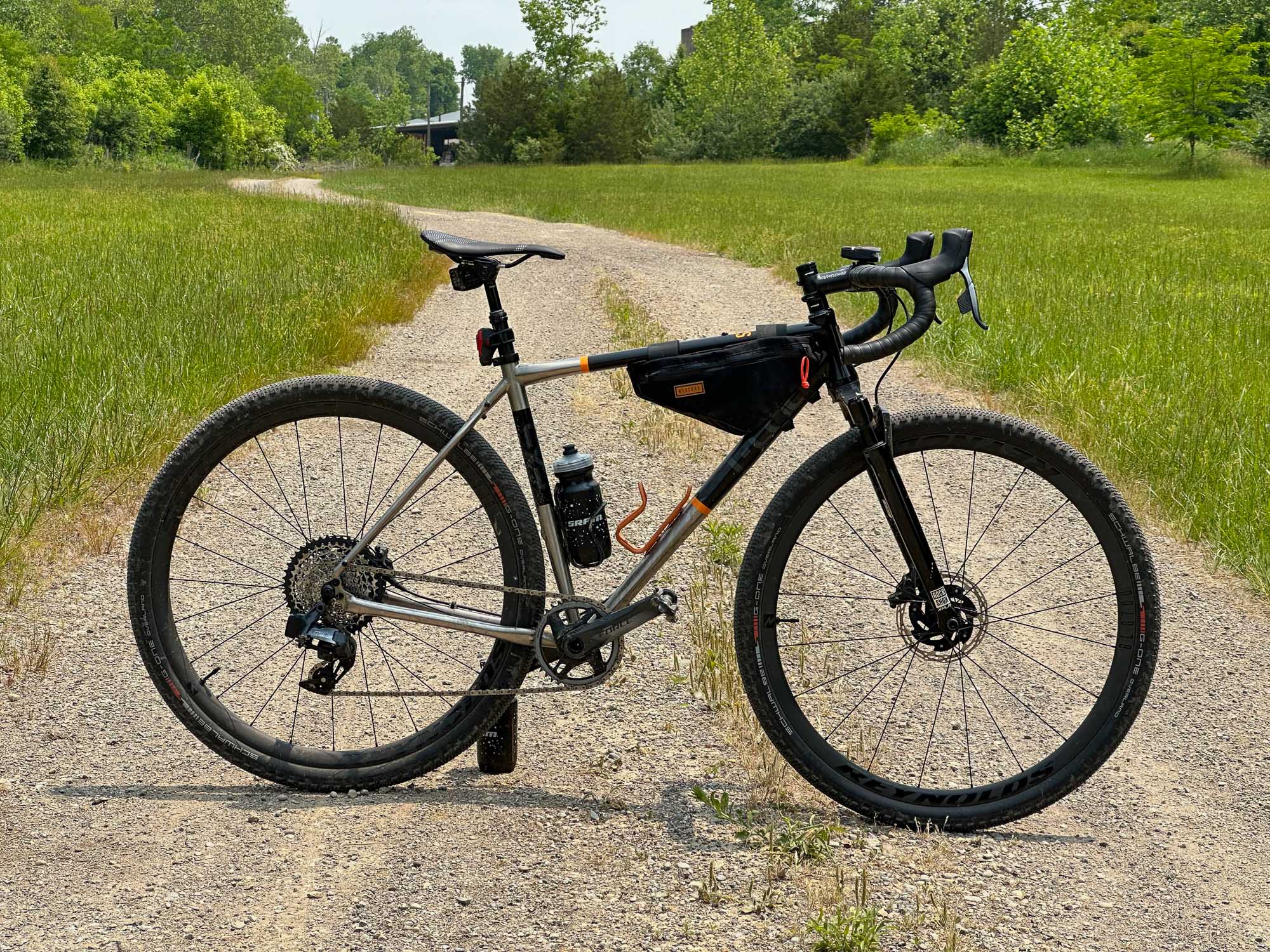
With all the talk about frame stiffness, when I first got out for a ride on the X3-S, I thought the frame might be too stiff. In actuality, it was just the spec choice. At my request, the X3-S was fitted with a RockShox Reverb AXS XPLR dropper post, which is a fantastic dropper. However, it turns out that dropper posts have a substantial impact on the ride quality at the saddle. I’m so glad I swapped it out for a carbon post to feel the difference because while I expected there to be some difference between the two, I was blown away by how big of an impact it had.
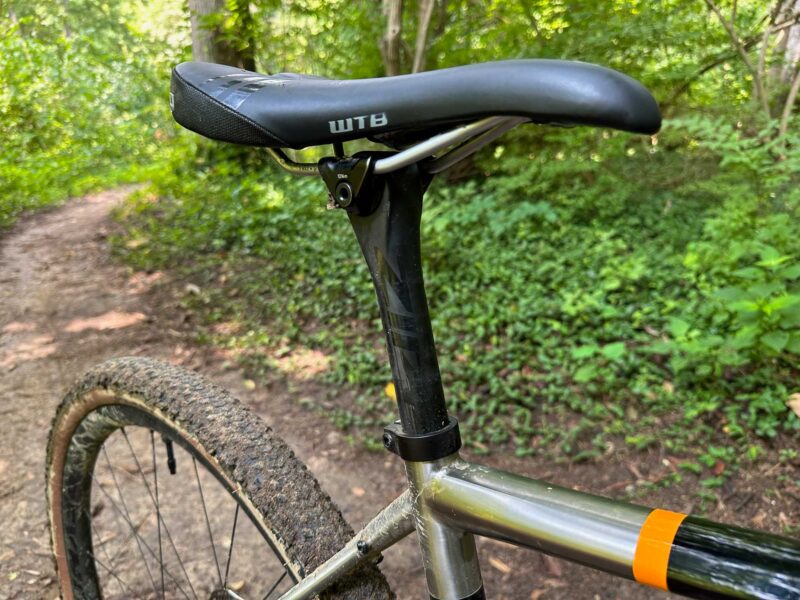
With a carbon Zipp SL Speed seatpost installed (and the same saddle), the ride quality completely changed. Instead of bracing for every little impact, you’re able to stay seated more comfortably, and I swear you can put more power down. I felt inexplicably faster with the rigid post installed – though I still missed the dropper in certain situations.
The Reverb AXS XPLR dropper does have “ActiveRide” which means that when the post isn’t fully topped out, there are a few millimeters of ‘suspension’ built in for compliance. Even with ActiveRide engaged, the ability of the carbon post to flex fore & aft makes for a more comfortable ride.
To me, that’s the beauty of the Reverb AXS XPLR dropper though. It’s so easy to swap it out for a rigid post and vice versa that you can truly run the post you need on a per-ride basis. Without any wires, cables, or additional remotes to worry about, swapping for the dropper is as simple as loosening the seat post binder, swapping the post, and tightening it down. Based on this experience, I’d keep the dropper post for any more technical rides, but otherwise, I’d run it rigid.
Suspension Fork Surprises
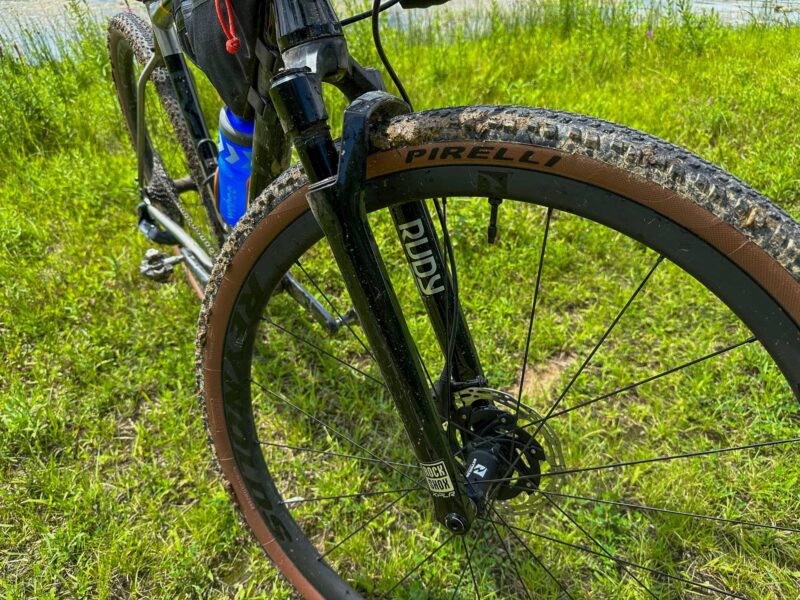
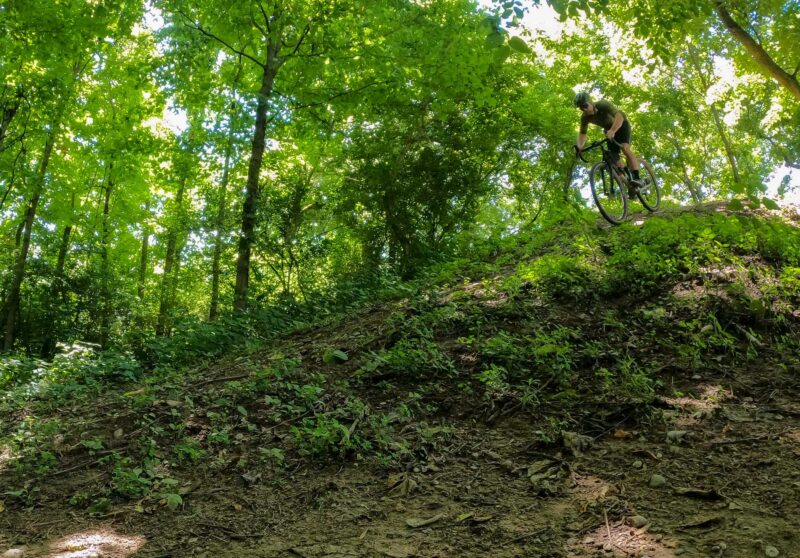
Up front, it’s a different story. I went into this review thinking the 40mm travel Rudy Ultimate XPLR suspension fork would be good for the technical sections, but I was pleasantly surprised to find that it made a noticeable difference on flat gravel sections as well. The fork does a great job of taking the edge off – it never feels like something you’d find on a mountain bike. Rather, it feels and looks the part on a gravel bike that may venture into more challenging terrain.
The lockout on the fork works fairly well, but even fully locked out there is a bit of give under hard efforts. The fork also offers a rebound adjustment and the whole set up was very easy to dial into my liking. Perhaps more importantly for some riders, the shaping of the fork and the all-black colorway keep it from standing out on a dropbar bike. It’s still obvious you’re running a suspension fork, but it looks the part more than some other gravel suspension forks.
Geometry
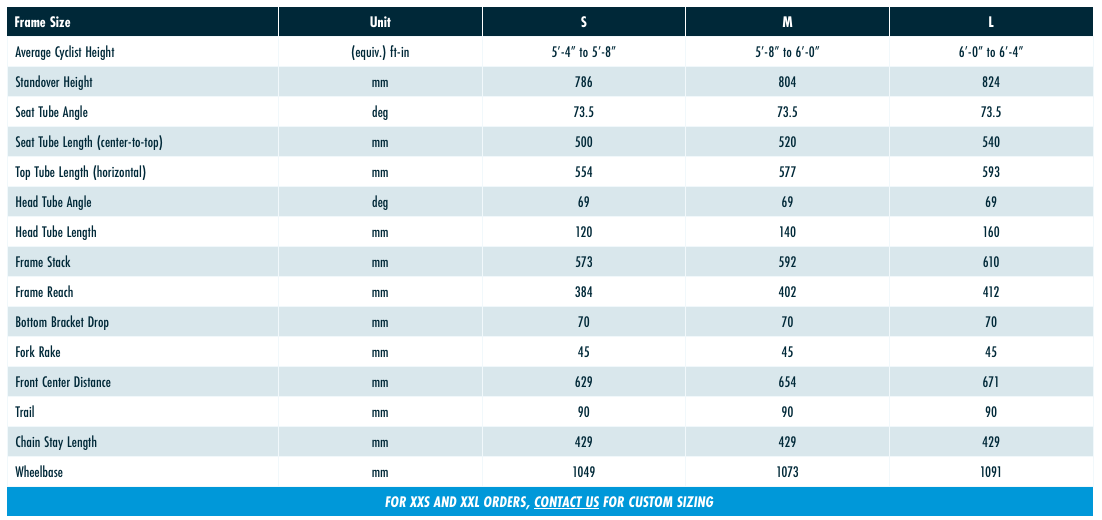
Compared to the T-Lab X3.22, the suspension-specific geometry is one of the main things that set the two models apart. The X3-S geometry strikes a great balance between long-haul stability and quick handling in the woods. The X3-S is on par with a number of gravel bikes with “progressive geometry”, with a 69º head tube angle, and 73.5º seat tube angle. It’s not quite as long in the top tube as some bikes made for shorter stems, but for me with an 80mm stem, it seems right on the money.
The X3-S is offered in just three stock sizes compared to the X3’s five, but all of the T-Lab bikes are available with custom geometry as an upgrade. T-Lab has a very detailed process where they walk you through the build and touch on what you want or need in your next bike.
When I started this process with T-Lab Co-Founder Rob Rossi, the geometry hadn’t been finalized yet but I ended up on what’s basically the stock Small with a 384mm reach and 1049mm wheelbase. Those numbers are similar but slightly greater than an Otso Warakin Ti in a 54cm, just to highlight the fact that the X3-S sizes might be on the larger side for their name. But again, if you have any doubts, T-Lab will make sure you’re on the right size bike as they did for me.
Part Swaps
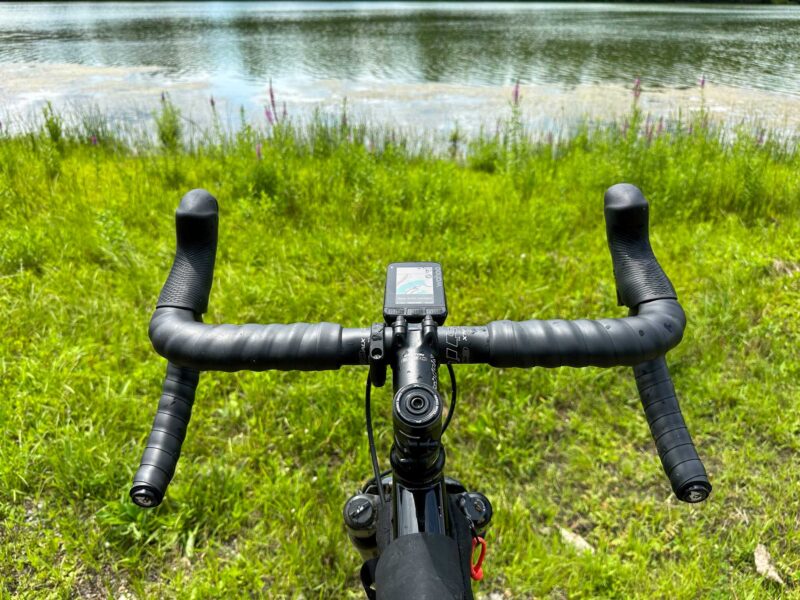
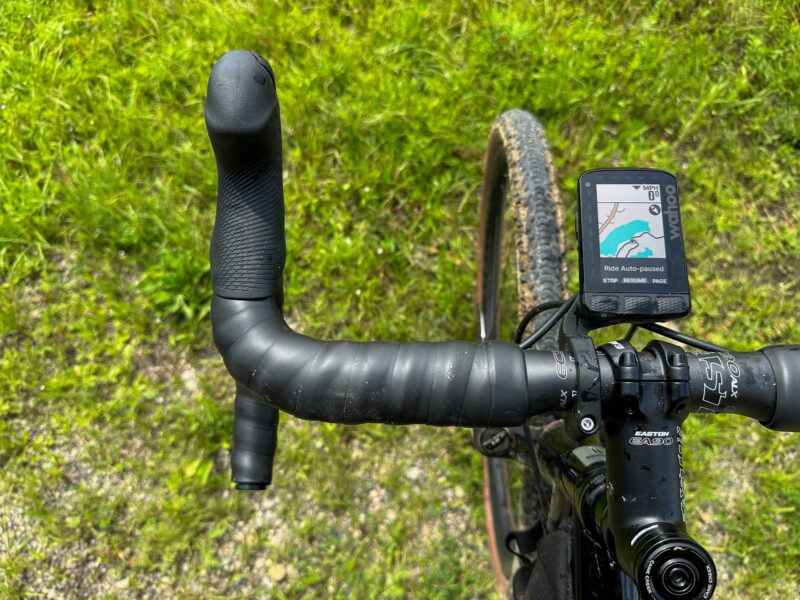
At 5’8″, I feel very comfortable on the small with an 80mm stem and a 44cm bar. The bike originally shipped with a 42cm FSA bar that felt too narrow. After swapping it out for the Easton EC90 ALX in a 44cm (with WTC Supple Lite Tape), I felt right at home. Note that the ALX is not a good choice if you love super-flared gravel bars, but at 10º, the flare is still plenty comfortable for gravel missions. It also offers a nice wide grip at the top of the bar which is a very comfy place to rest your hands on long, monotonous stretches of pavement.
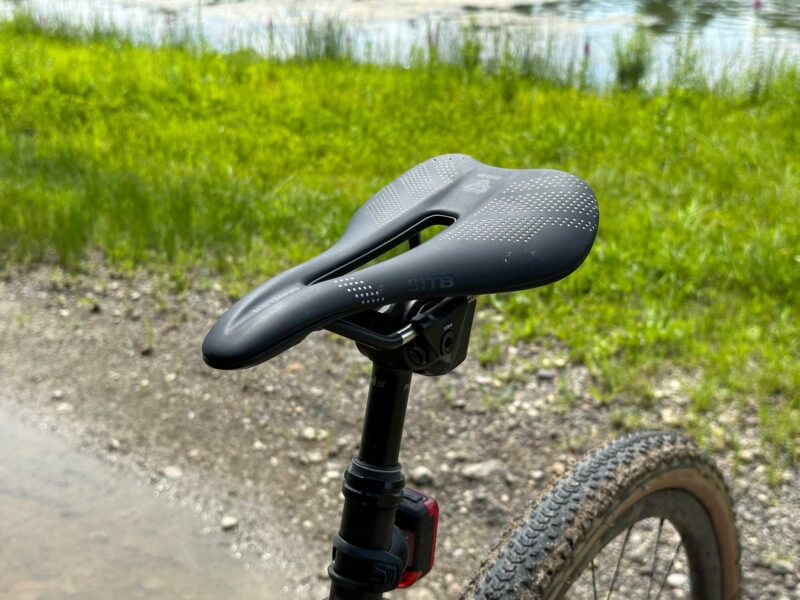
The only other real spec change I made was the saddle. When this particular bike was built, components were still in short supply and T-Lab built it with what they could get. In this case, that meant a Selle Italia saddle without any markings at all. It looks like the Model X, but doesn’t have the markings of their production saddles, so I’m going to hope this was some kind of pre-production sample because it was one of the most unforgiving saddles I’ve ever tried (complete bikes now ship with a Fizik Terra Argo).
Swapping it out for the new WTB Gravelier proved to be a huge relief, and it’s been on the bike ever since. The Gravelier is a shorter saddle with a wide cushion and a cutout, making it comfortable for long days in the saddle without getting in the way on technical terrain.
Drivetrain
Complete bikes from T-Lab will include the choices of Shimano GRX 11spd (mechanical or Di2), SRAM Force AXS eTap, or Campagnolo Ekar, all with 1x builds. For this build, SRAM provided their Force AXS XPLR group with a 1x crankset and a 10-44t cassette. Overall, the group has been nearly flawless with the exception of some noise from the disc brakes. While a bit noisy at times, the brakes provide impressive stopping power, and are easy to modulate in situations where traction is at a premium. At this point, I’ve put this bike through the wringer and while I’ve had some issues in the past with Flattop chains, I’ve had zero issues this time around.
That includes the rear derailleur taking a substantial hit – big enough that I bent the derailleur hanger badly. I was able to limp home making sure not to shift into the easy gears so the derailleur wouldn’t go into the spokes. Once at home, I was able to straighten the hanger with my Abbey HAG, and it’s been shifting well ever since. If this was my bike, I’d replace the hanger to be safe, but it’s good to know that the hanger will do its job, and is actually able to be straightened.
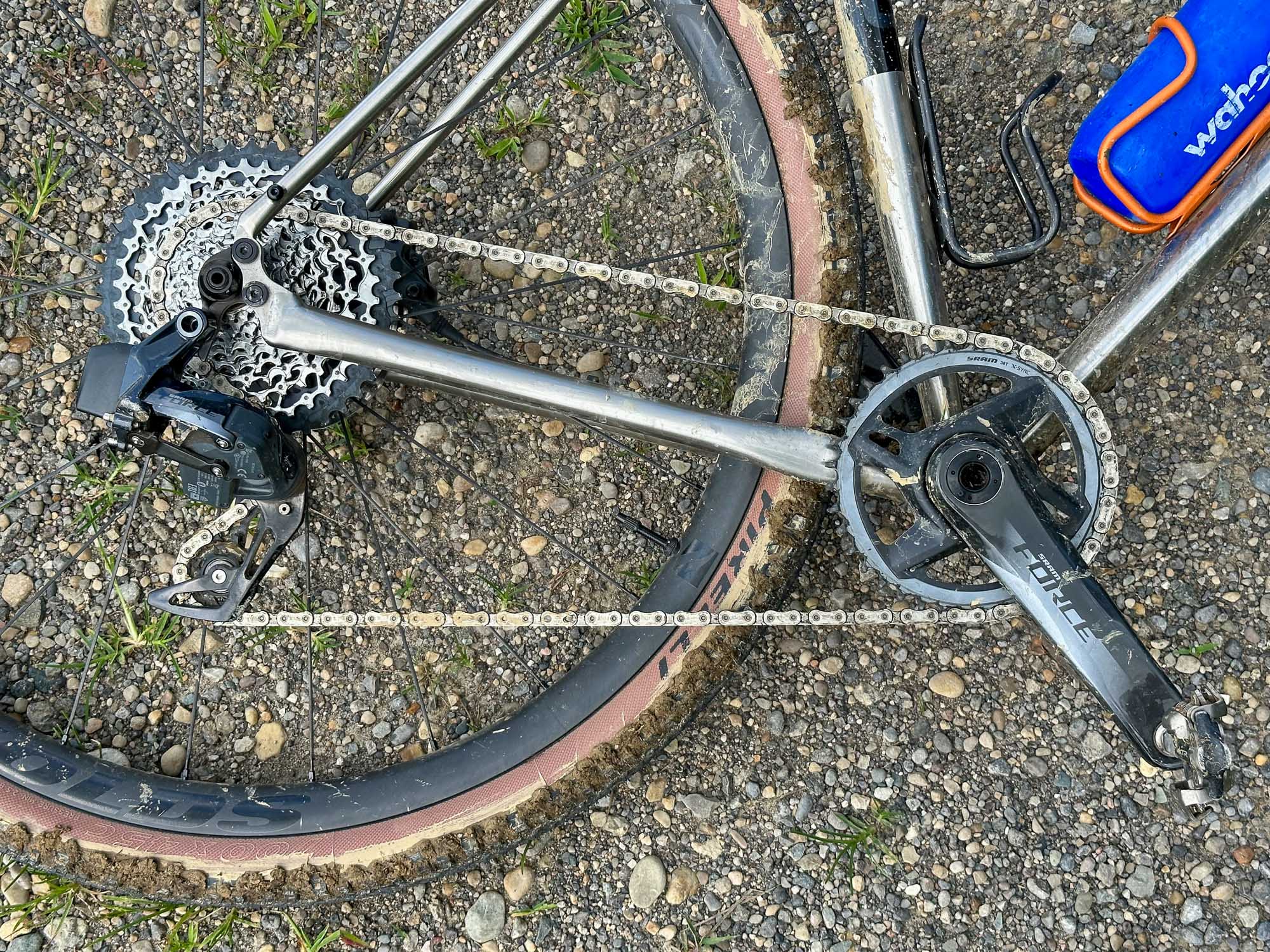
About those dropouts: T-Lab says that they’ve been designed to improve frame stiffness and shifting precision. When asked, T-Lab told us that they have no plans to offer a SRAM UDH-compatible dropout in the near future.
I’ve run a few different wheelsets on this bike, but the Reynolds Black Label G700 Pro wheels have been on the longest. The wheels were easy to set up tubeless, have taken a true beating without ever touching a truing stand, and roll on straight pull hubs made by Industry Nine. There’s a lot to like here, plus they look great on the bike with the custom paint.
Painted Titanium?
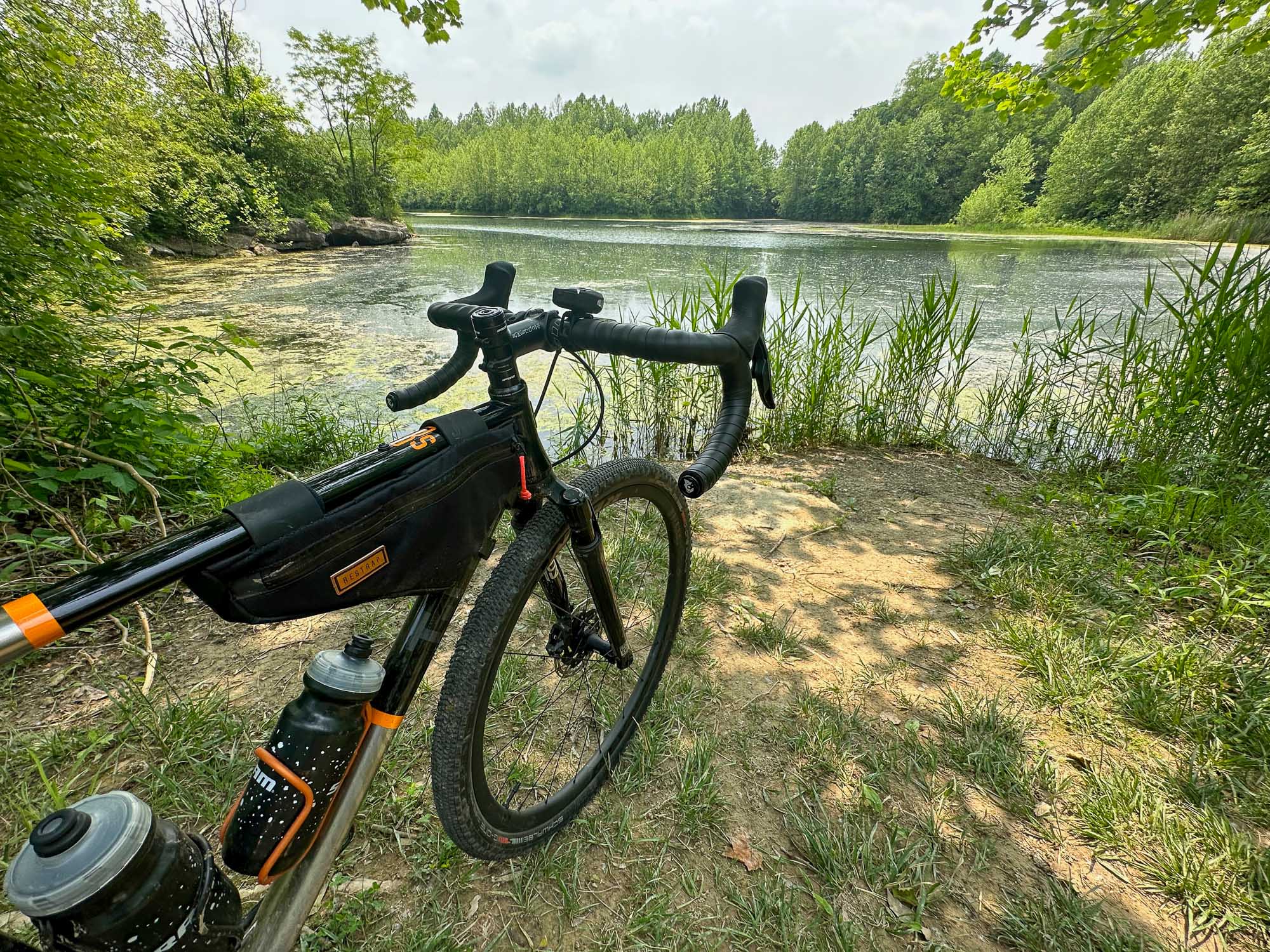
Admittedly, I was a little unsure about paint on a titanium frame. I expected it to quickly wear and not have that enduring finish titanium frames are known for. Fortunately, I was completely wrong about that and the finish on the paint is holding up beautifully.
Even under the Restrap frame bag I’ve been running most of the test period, the paint is in great shape (which is also a testament to how well the Restrap bags fit). If you look close enough, there is some light marring, but overall it has to be one of the more durable paint finishes I’ve seen on any bike, not just titanium. I should point out that titanium purists can choose from their Pure or Lux finishes which are without paint, and offer a beadblasted/brushed or brushed/beadblasted raw Ti finish.
Those WTC Morse Cage Ti bottle cages with Cerakote finishes have also held up better than most painted cages, though the Cerakote finish has started rubbing off where the bottles meet the cage. We’ve had a pretty wet season so far, and there has been plenty of grit from mud, sand, and dirt to accelerate the process. The cages still look good though, since the bottles cover up any spots where the finish is missing.
Press-fit BB… Or Not
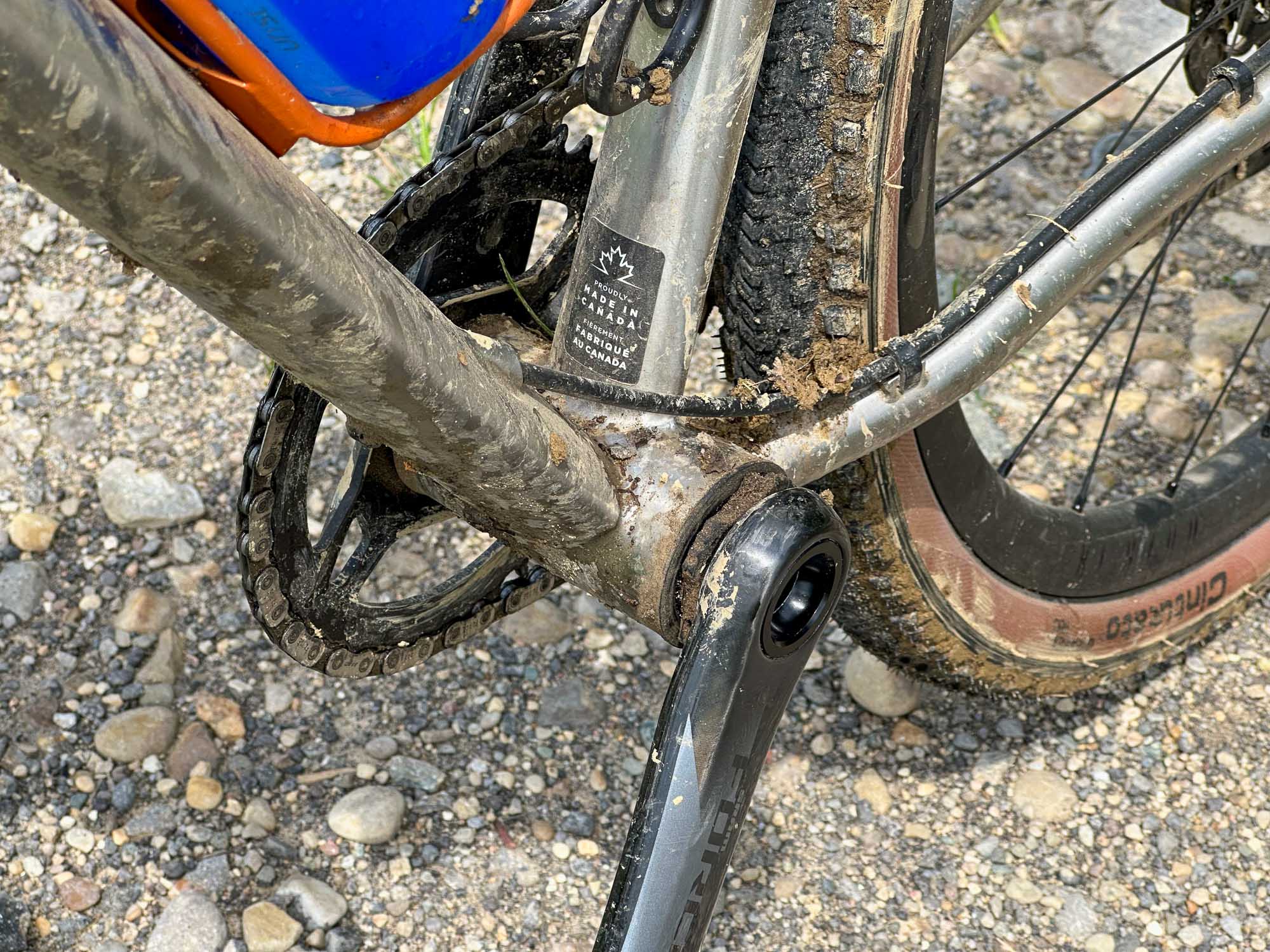
Another question mark I had going into the review was the use of a BB-386 bottom bracket. That spec choice was driven by T-Lab wanting to increase stiffness at the bottom bracket. To ensure the fit is perfect, the bottom bracket shells are post-machined after welding. On this bike, the bottom bracket has been silent – not all that surprising for one season on a frame. Still, given the care put into making sure the BB bore is perfectly machined and aligned, you should have no problem with the BB-386 in the future either. Still can’t get over a press-fit bottom bracket? T-Lab will build your bike with a T47 threaded bottom bracket for another $200.
Actual Weight
As shown above with the Reynolds wheels, Pirelli tires, SRAM Force AXS XPLR drivetrain, and the Easton cockpit, the complete bike weighs 20.5lbs (9.3kg) with the rigid carbon post, or 21.10lbs (9.57kg) with the Reverb AXS XPLR post. You could definitely get the complete bike under 20lbs with a suspension fork if you tried.
Tire Clearance
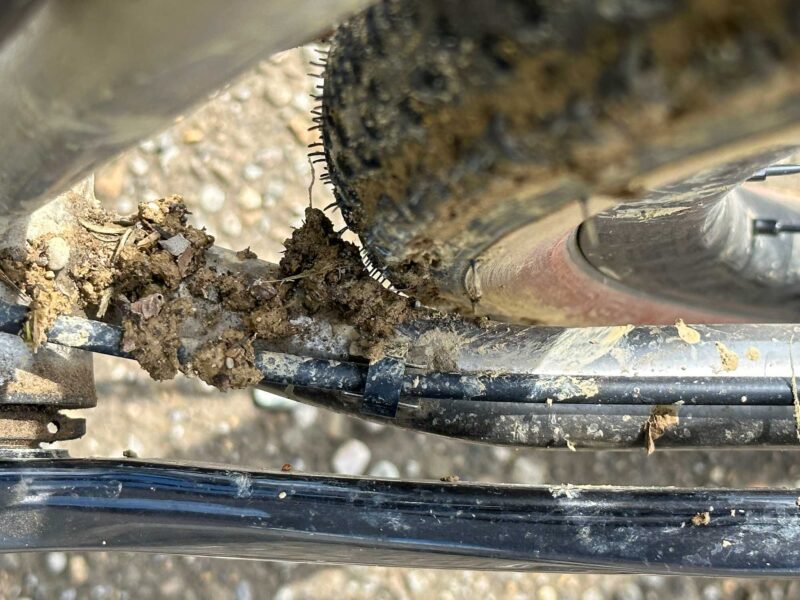
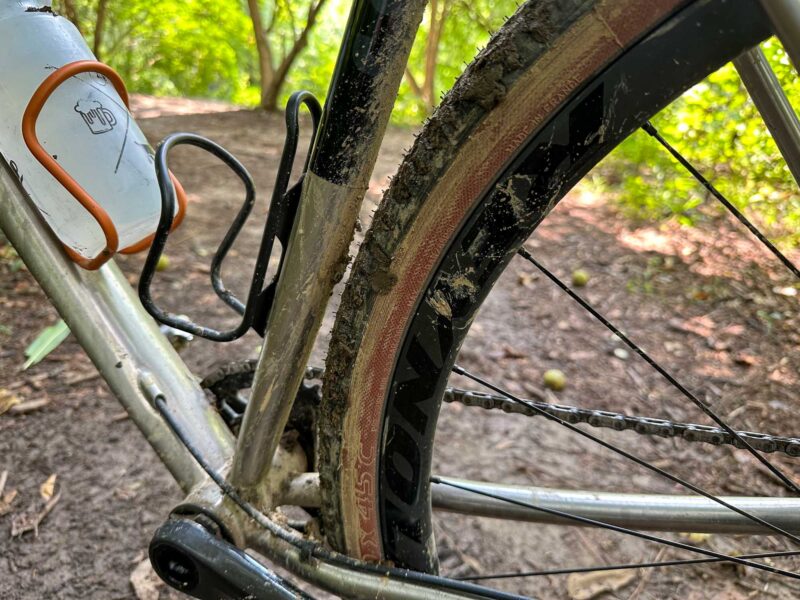
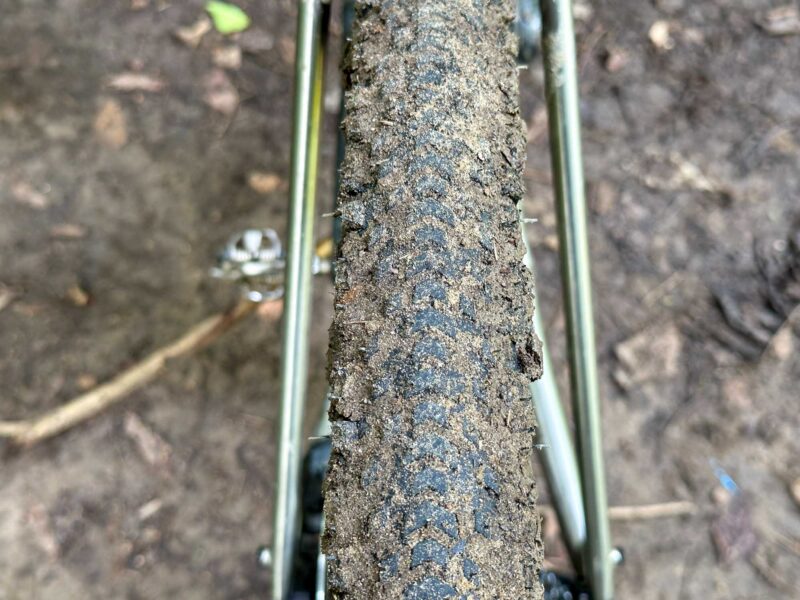
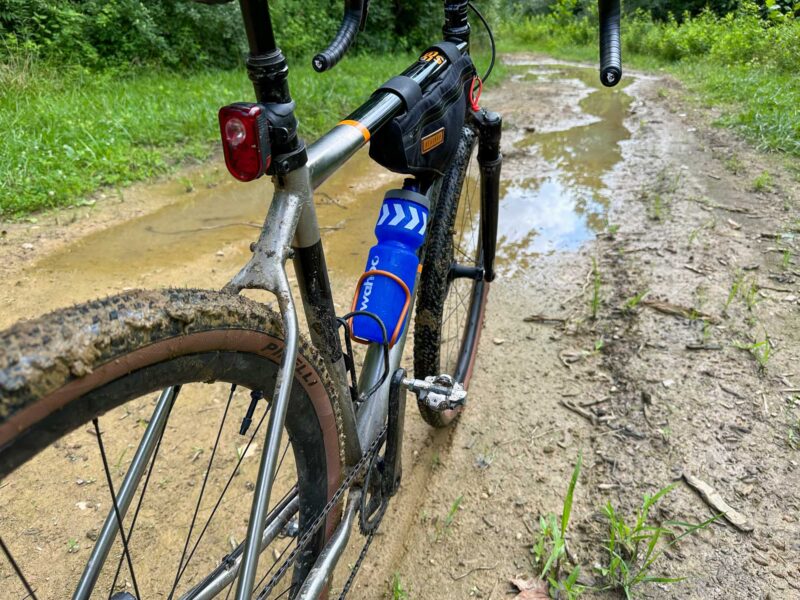
If there is one area that T-Lab could improve the X3-S, it would be the rear tire clearance. The maximum tire size is listed as 700c x 45mm, but even with 45mm tires installed, it can get a bit tight when things get muddy. To be fair to T-Lab, the 700c x 45mm Pirelli Cinturato Gravel RC tires I have installed on the Reynolds rims measure 48.5mm once stretched. But to me, the frame tire clearance should match that of the fork, which in this case is 700c x 50mm.
That’s being hyper-critical though, as I’ve been riding the Pirellis a lot recently, and even at 48.5mm, there isn’t any tire rub on the frame, and mud still clears moderately well. I’ve even run some 700c x 50mm tires like the Schwalbe G-One Overland tires without rubbing. The Pirelli RC tires seem to have a bit more rolling resistance on pavement, but all of that is forgotten as soon as the tires venture off-road. Traction in everything but the muddiest conditions is incredible, and even when the tires are completely caked in mud, they shed it quickly.
Riding Home
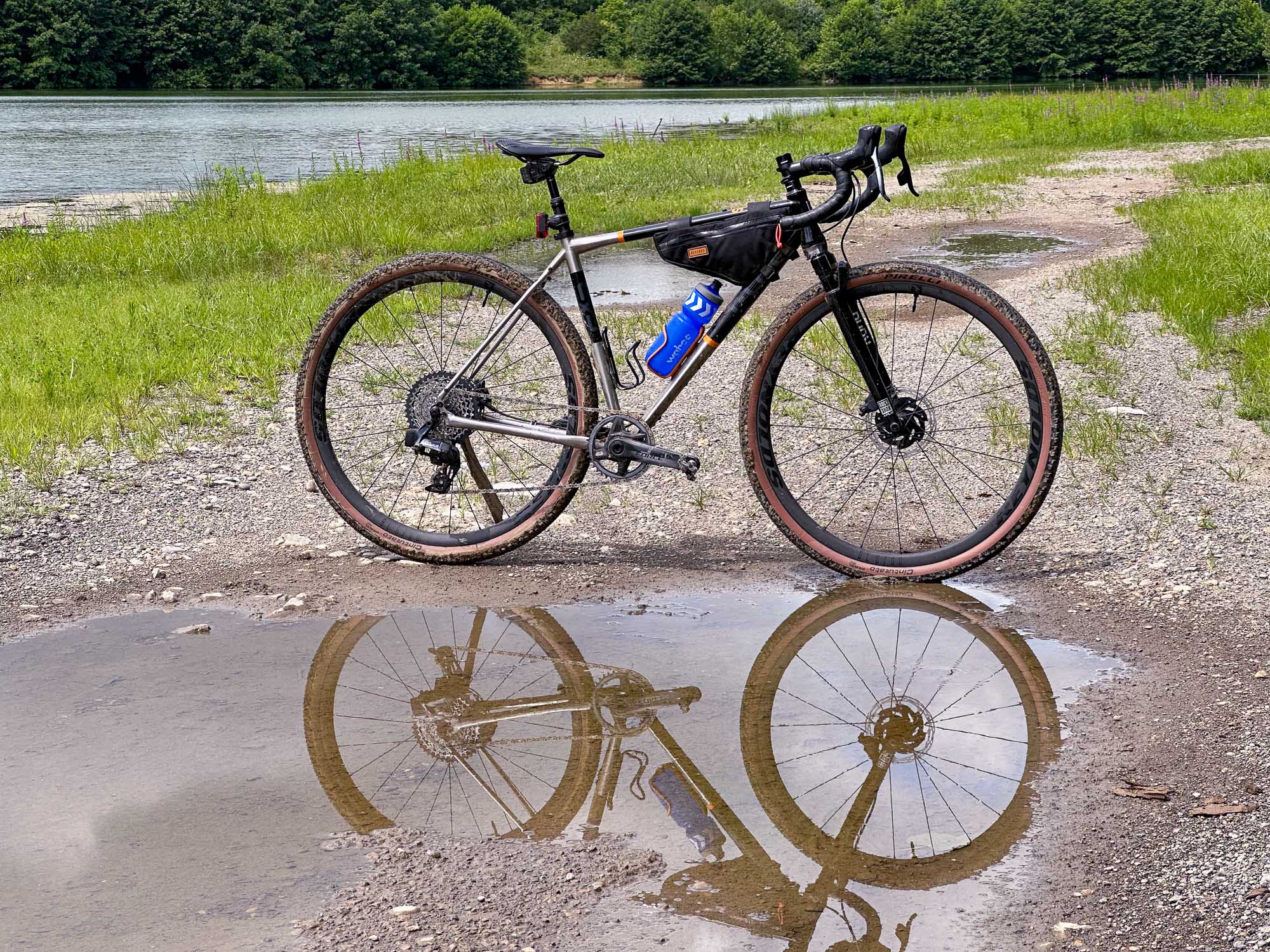
At the end of the ride, the T-Lab X3-S left me a bit surprised. Surprised that a titanium bike can be this stiff in the right ways, surprised what 40mm of suspension travel can do for the overall ride quality, and surprised that I would consider a painted finish on a Ti bike. With the exception of riders who want to run the biggest tires in sloppy conditions, the X3-S checks nearly every box a gravel / ATB / adventure rider could look for. From nearly stock bikes off the shelf to full custom, T-Lab’s made-in-Canada titanium bikes are also reasonably priced with complete Shimano GRX600 builds starting at $4,875.
And while you don’t need a suspension fork on a titanium bike, the X3-S makes me want one.
For more technical details on the T-lab X3-S, check out our first look here.
